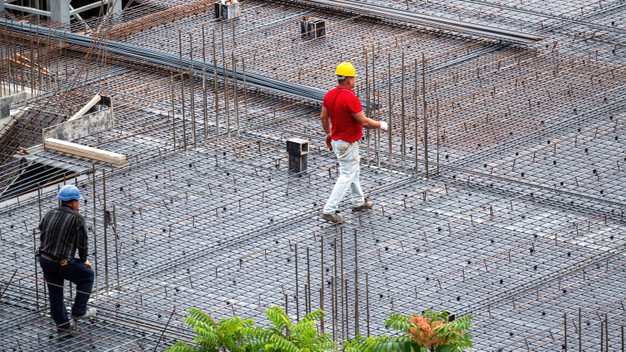What are Steel Concrete columns?
Steel Concrete columns are compressed members, consisting of either a concrete-clad hot-rolled steel section or a concrete-filled tubular section of hot-rolled steel generally used as a load-bearing member in a composite framed structure. Typical cross-sections of steel-section steel-section composite columns that are fully and partially concreted are shown.
It was noted that there are no requirements to provide additional steel reinforcement for composite concrete-filled tubular sections, except for fire resistance requirements where applicable. In a composite shaft, both steel and concrete will resist external loading by interacting together via bonds and friction. The additional reinforcement in the concrete casing prevents excessive splintering of concrete under normal load and fire conditions.
In composite construction, bare steel sections support the initial building loads, including the weight of the structure during construction. Concrete is subsequently cast around the steel section, or fill within the tubular sections, and the concrete and steel are combined in such a way that the advantages of both materials are effectively used in the composite column. The lighter weight and higher strength of steel also allow for smaller and lighter foundations.
The subsequent concrete addition enables the building’s frame to easily reduce lateral deflections and impact. With the use of composite columns combined with composite decking and beams, it is possible to erect taller structures in a very efficient manner. Where there is a completely vertical spread of construction activity being performed simultaneously at any given time, with many crafts working simultaneously.
Structural performance of Steel Concrete columns
First, the contribution of transverse steel in concrete buildings
Prefabricated angle steel composite columns are highly dependent on the transverse reinforcement connecting the angle steel corners. So that transverse reinforcement provides shear transfer between steel corners, bonding between steel corners and concrete, bending resistance of steel corners, and lateral confinement of core concrete.
To meet bonding and bending resistance requirements, close spacing, as well as adequate strength, are required for transverse reinforcement. However, the crossbars welded to the angle steels or the transverse plates connected to the angle steels may cause a premature tensile fracture in the joint, which must be taken into account in the design.
The concrete covering provides local flexural resistance and fire resistance to steel angles. When the crossbars are not closely spaced, the steel composite columns are susceptible to premature sharding of the cap concrete due to the smooth surface of the steel corners.
In particular, when the columns are subjected to a high axial compressive force, the load-bearing capacity and deformation ability of steel composite poles can be degraded by the premature splintering of the cover concrete. Moreover, under periodic lateral loading, it is expected that steel composite shafts will be more susceptible to these damages as the demand for ductility increases.
Source: wikipedia.org/wiki/Reinforced_concrete
Read More: buildineg.com/public/blog/what-is-a-concrete-jacketing-of-column/

